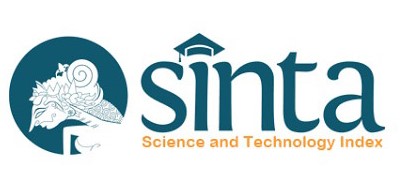Fluid Management for Critically Ill Patients, Based on the ROSE Concept, an Old Method but Effective Enough
Abstract
Fluid therapy is one of the most essential things in managing critical patients, such as ICU patients. Although it seems simple, this is difficult to do in this group of patients. The fluid needs of ICU patients vary according to the course of the disease. Therefore, fluids must be given according to individual needs, and each phase of the disease must be reassessed. To support this, there is a conceptual model that explains fluid administration based on the phases of the disease that the patient is going through. The ROSE concept (resuscitation, optimization, stabilization, and evacuation) describes the phases of a patient's illness and how fluids should be administered. In the resuscitation phase, the goal is lifesaving and is achieved by positive fluid balance. In the optimization phase, fluid balance is neutral and aims to save organs. In the stabilization phase, the fluid balance has started to move in a negative direction and aims to support the organs. Finally, in the evacuation phase, fluid balance is negative and organ repair has occurred. By implementing this model, it is hoped that ICU patients will have better outcomes
Keywords
Full Text:
PDFReferences
Barlow A, Barlow B, Tang N, Shah BM, King AE. Intravenous Fluid Management in Critically Ill Adults: A Review. Crit Care Nurse. 2020;40(6):e17-e27. doi:10.4037/ccn2020337
Hoste EA, Maitland K, Brudney CS, et al. Four phases of intravenous fluid therapy: A conceptual model. Br J Anaesth. 2014;113(5):740-747. doi:10.1093/bja/aeu300
Malbrain MLNG, Langer T, Annane D, et al. Intravenous fluid therapy in the perioperative and critical care setting: Executive summary of the International Fluid Academy (IFA). Ann Intensive Care. 2020;10(1). doi:10.1186/s13613-020-00679-3
Frazee EN, Leedahl DD, Kashani KB. Key controversies in colloid and crystalloid fluid utilization. Hosp Pharm. 2015;50(6):446-453. doi:10.1310/hpj5006-446
Bersten AD, Handy JM. Oh’s Intensive Care Manual Eight Edition. Elsevier. 2019; 1117- 1120
Humes HD.Disorders of water metabolism. Fluid and Electrolytes. Philadelphia: WB Saunders; 1986: 118-149
Malbrain MLNG, Marik PE, Witters I, et al. Fluid overload, de-resuscitation, and outcomes in critically ill or injured patients: A systematic review with suggestions for clinical practice. Anaesthesiol Intensive Ther. 2014;46(5):361-380. doi:10.5603/AIT.2014.0060
Malbrain MLNG, Van Regenmortel N, Saugel B, et al. Principles of fluid management and stewardship in septic shock: it is time to consider the four D’s and the four phases of fluid therapy. Ann Intensive Care. 2018;8(1). doi:10.1186/s13613-018-0402-x
Rhodes A, Evans LE, Alhazzani W, et al. Surviving Sepsis Campaign: International Guidelines for Management of Sepsis and Septic Shock: 2016. Vol 43. Springer Berlin Heidelberg; 2017. doi:10.1007/s00134-017-4683-6
Vincent JL. Fluid management in the critically ill. Kidney Int. 2019;96(1):52-57. doi:10.1016/j.kint.2018.11.047
Kelm DJ, Perrin JT, Cartin-Ceba R, Gajic O, Schenck L, Kennedy CC. Fluid overload in patients with severe sepsis and septic shock treated with early goal-directed therapy is associated with increased acute need for fluid-related medical interventions and hospital death. Shock. 2015;43(1):68-73. doi:10.1097/SHK.0000000000000268
Mark PE. Hemodynamic parameters to guide fluid therapy. Transfus Altern Transfus Med. 2010;11(3):102-112. 10.1111/j.1778-428X.2010.01133.x%5Cn http://search.ebscohost.com/login.aspx?direct=true&db=a9h&AN=54908168〈=es&site=ehost-live
Nunes TSO, Ladeira RT, Bafi AT, de Azevedo LCP, Machado FR, Freitas FGR. Duration of hemodynamic effects of crystalloids in patients with circulatory shock after initial resuscitation. Ann Intensive Care. 2014;4(1):1-7. doi:10.1186/s13613-014-0025-9
Guarino M, Perna B, Cesaro AE, et al. 2023 Update on Sepsis and Septic Shock in Adult Patients: Management in the Emergency Department. J Clin Med. 2023;12(9). doi:10.3390/jcm12093188
Edwards JD. Regular Review - Management of Septic Shock. Br Med J. 1993;306(6893):1661-1664
Alphonsus CS, Rodseth RN. The endothelial glycocalyx: A review of the vascular barrier. Anaesthesia. 2014;69(7):777-784. doi:10.1111/anae.12661
Chappell D, Bruegger D, Potzel J, et al. Hypervolemia increases release of atrial natriuretic peptide and shedding of the endothelial glycocalyx. Crit Care. 2014;18(5):1-8. doi:10.1186/s13054-014-0538-5
Evans L, Rhodes A, Alhazzani W, et al. Surviving sepsis campaign: international guidelines for management of sepsis and septic shock 2021. Intensive Care Med. 2021;47(11):1181-1247. doi:10.1007/s00134-021-06506-y
Marik PE, Byrne L, van Haren F. Fluid resuscitation in sepsis: The great 30 mL per kg hoax. J Thorac Dis. 2020;2(February):S37-S47. Doi:10.21037/jtd.2019.12.84
Bakker J, Kattan E, Annane D, et al. Current practice and evolving concepts in septic shock resuscitation. Intensive Care Med. 2022;48(2):148-163. doi:10.1007/s00134-021-06595-9
Kattan E, Castro R, Miralles-Aguiar F, Hernández G, Rola P. The emerging concept of fluid tolerance: A position paper. J Crit Care. 2022;71:154070. doi:10.1016/j.jcrc.2022.154070
Messmer AS, Zingg C, Müller M, Gerber JL, Schefold JC, Pfortmueller CA. Fluid Overload and Mortality in Adult Critical Care Patients-A Systematic Review and Meta-Analysis of Observational Studies∗. Crit Care Med. 2020;48(12):1862-1870. doi:10.1097/CCM.0000000000004617
Fang J, Wang M, Gong S, Cui N, Xu L. Increased 28-day mortality due to fluid overload prior to continuous renal replacement in sepsis associated acute kidney injury. Ther Apher Dial. 2022;26(2):288-296. doi:10.1111/1744-9987.13727
Monnet X, Shi R, Teboul JL. Prediction of fluid responsiveness. What’s new? Ann Intensive Care. 2022;12(1). doi:10.1186/s13613-022-01022-8
Perner A, Cecconi M, Cronhjort M, et al. Expert statement for the management of hypovolemia in sepsis. Intensive Care Med. 2018;44(6):791-798. doi:10.1007/s00134-018-5177-x
Malbrain MLNG, Van Regenmortel N, Owczuk R. It is time to consider the four D’s of fluid management. Anaesthesiol Intensive Ther. 2015;47(1):s1-s5. doi:10.5603/AIT.a2015.0070
Murphy C V., Schramm GE, Doherty JA, et al. The importance of fluid management in acute lung injury secondary to septic shock. Chest. 2009;136(1):102-109. doi:10.1378/chest.08-2706
Bagshaw SM, Bellomo R. The influence of volume management on outcome. Curr Opin Crit Care. 2007;13(5):541-548. doi:10.1097/MCC.0b013e3282e2a978
Levy MM, Evans LE, Rhodes A. The Surviving Sepsis Campaign Bundle: 2018 update. Intensive Care Med. 2018;44(6):925-928. doi:10.1007/s00134-018-5085-0
Phua J, Koh Y, Du B, et al. Management of severe sepsis in patients admitted to Asian intensive care units: Prospective cohort study. Bmj. 2011;342(7812). doi:10.1136/bmj.d3245
Dellinger RP, Levy M, Rhodes A, et al. Surviving sepsis campaign: International guidelines for management of severe sepsis and septic shock: 2012. Crit Care Med. 2013;41(2):580-637. doi:10.1097/CCM.0b013e31827e83af
Cordemans C, de Laet I, van Regenmortel N, et al. Aiming for a negative fluid balance in patients with acute lung injury and increased intraabdominal pressure: A pilot study looking at the effects of PAL-treatment. Ann Intensive Care. 2012;2012(Suppl 1):1-11. doi:10.1186/2110-5820-2-S1-S15
DOI: http://dx.doi.org/10.21776/ub.jap.2024.005.01.02
Refbacks
- There are currently no refbacks.

This work is licensed under a Creative Commons Attribution 4.0 International License.









.png)

